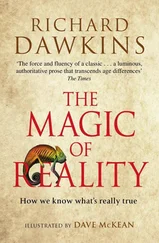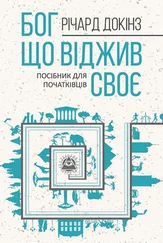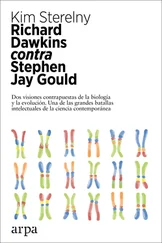For lo, the winter is past, the rain is over and gone. The flowers appear on the earth; the time of the singing of birds is come, and the voice of the turtle is heard in our land.
The poetry is so ravishing that I am reluctant to spoil it by noting that here, too, is an undoubted mutation. Reinsert “dove” after “turtle,” as the modern translations correctly but leadenly do, and hear the cadence collapse. But these are minor errors, the inevitable, slight degradations we have to expect when documents are not printed in thousands or etched on high-fidelity computer disks but copied and recopied by mortal scribes from scarce and vulnerable papyri.
But now let sex enter the picture. (No, in the sense I mean, sex does not enter the Song of Songs.) Sex, in the sense I mean, amounts to ripping out half of one document, in the form of randomly chosen fragments, and mixing it with the complementarily butchered half of another {41} document. Unbelievable – vandalistic, even – as it sounds, this is exactly what happens whenever a sex cell is made. For instance, when a man makes a sperm cell, the chromosomes that he inherited from his father pair off with the chromosomes that he inherited from his mother, and great chunks of them change places. A child's chromosomes are an irretrievably scrambled mishmash of its grandparents' chromosomes and so on back to distant ancestors. Of the would-be ancient texts, the letters, perhaps the words, may survive intact down the generations. But chapters, pages, even paragraphs are torn up and recombined with such ruthless efficiency that as a means of tracing history they are almost useless. Where ancestral history is concerned, sex is the great cover-up.
We can use DNA archives to reconstruct history wherever sex is safely out of the picture. I can think of two important examples. One is African Eve, and I'll come to her. The other case is the reconstruction of more remote ancestry – looking at relationships among species rather than within species. As we saw in the previous chapter, sexual mixing takes place only within species. When a parental species buds off a daughter species, the river of genes splits into two branches. After they have diverged for a sufficient time, sexual mixing within each river, far from being a hindrance to the genetic archivist, actually helps in the reconstruction of ancestry and cousinships among species. It is only where within-species cousinships are concerned that sex messes up the evidence. Where between-species cousinships are concerned, sex helps because it tends automatically to ensure that each individual is a good genetic sample of the entire species. It doesn't {42} matter which bucketful you haul out of a well-churned river; it will be representative of the water of that river.
DNA texts taken from representatives of different species have indeed been compared, with great success, letter by letter, to construct family trees of species. It is even possible, according to one influential school of thought, to put dates on the branchings. This opportunity follows from the albeit controversial notion of a “molecular clock”: the assumption that mutations in any one region of the genetic text occur at a constant rate per million years. We'll return to the molecular-clock hypothesis in a moment.
The “paragraph” in our genes describing the protein called cytochrome c is 339 letters long. Twelve letter changes separate human cytochrome c from the cytochrome c of horses, our rather distant cousins. Only one cytochrome c letter change separates humans from monkeys (our fairly close cousins), one letter change separates horses from donkeys (their very close cousins) and three letter changes separate horses from pigs (their somewhat more distant cousins). Forty-five letter changes separate humans from yeast and the same number separates pigs from yeast. It is not surprising that these numbers should be the same, because as we follow back the river leading to humans, it joins with the river leading to pigs much more recently than their common river joins the river leading to yeast. There is a little slop in these numbers, however. The number of letter changes in cytochrome c separating horses from yeast is not forty-five but forty-six. This does not mean that pigs are closer cousins of yeast than horses are. They are exactly equally close to yeast, as are all vertebrates – and, indeed, all animals. Perhaps an extra change crept into the lineage leading to horses since the time {43} of the rather recent ancestor they share with pigs. That is not important. On the whole, the number of cytochrome c letter changes separating pairs of creatures is pretty much what we'd expect from previous ideas of the branching pattern of the evolutionary tree.
The molecular clock theory, as noted, holds that the rate of change of a given piece of text per million years is roughly fixed. Of the forty-six cytochrome c letter changes separating horses from yeast, it is assumed that about half of them occurred during evolution from the common ancestor to modern horses and about half of them occurred during evolution from the common ancestor to modern yeast (obviously, the two evolutionary pathways have taken exactly the same number of millions of years to accomplish). At first this seems a surprising thing to assume. After all, it is pretty likely that the common ancestor resembled yeast more than it resembled a horse. The reconciliation lies in the assumption, increasingly accepted since it was first championed by the eminent Japanese geneticist Motoo Kimura, that the greater part of genetic texts can change freely without the text's meaning being affected.
A good analogy is varying the typeface in a printed sentence. “A horseis a mammal.” “ A yeast is a fungus.” The meaning of these sentences comes through loud and clear, even though every word is printed in a different font. The molecular clock ticks away in the equivalent of meaningless font changes, as the millions of years go by. The changes that are subject to natural selection and that describe the difference between a horse and a yeast – the changes in meaning of the sentences – are the tip of the iceberg.
Some molecules have a higher clock rate than others. {44} Cytochrome c evolves relatively slowly: about one letter change every twenty-five million years. This is probably because cytochrome c 's vital importance to an organism's survival depends critically upon its detailed shape. Most changes in such a shape-critical molecule are not tolerated by natural selection. Other proteins, such as those called fib-rinopeptides, although they are important, work equally well in lots of variant forms. The fibrinopeptides are used in blood clotting, and you can change most of their details without harming their clottability. The mutation rate in these proteins is about one change every six hundred thousand years, a rate more than forty times faster than that for cytochrome c . Fibrinopeptides, therefore, are no good for reconstructing ancient ancestry, although they are useful for reconstructing more recent ancestry – for example, within the mammals. There are hundreds of different proteins, each changing at its own characteristic rate per million years and each independently usable for reconstructing family trees. They all yield pretty much the same family tree – which, by the way, is rather good evidence, if evidence were needed, that the theory of evolution is true.
We came into this discussion from the realization that sexual mixing messes up the historical record. We distinguished two ways in which the effects of sex could be escaped. We've just dealt with one of them, following from the fact that sex does not mix genes between species. This opens up the possibility of using DNA sequences to reconstruct remotely ancient family trees of our ancestors that lived long before we became recognizably human. But we've already agreed that if we go back that far we humans are all definitely descended from the same single individual {45} anyway. We wanted to find out how recently we could still claim common descent with all other humans. To discover that, we have to turn to a different kind of DNA evidence. This is where African Eve comes into the story.
Читать дальше












